swell photobooks of 2013
Posted: 14/12/2013 Filed under: Books | Tags: "best of" lists, Arimoto Shinya, Kurata Seiji, Onaka Kōji, photobooks from Japan, Suda Issei, Watabe Yūkichi 3 CommentsApproaching the end of another year: it’s the season for photobooks roasting on an open fire, and lots more mutual encouragement to acquire more stuff and make the year’s consumption more conspicuous. I’m tempted to do a world survey, but I haven’t seen enough of what my fellow bloggers prattle about, let alone of the many more books that largely go unmentioned but that sound interesting (example). So I’ll do a _Valerian and look at Japan and not sekai (as the rest of the world is called hereabouts).
I thought that Abe Jun’s Black and white notebook 2 came out this year, but its colophon tells me December ’12. So that’s out. I solemnly swear that all the below are from 2013, honest. (Except for one that might be older than you are, but this is clearly so identified.)
Onaka Kōji, Lucky cat
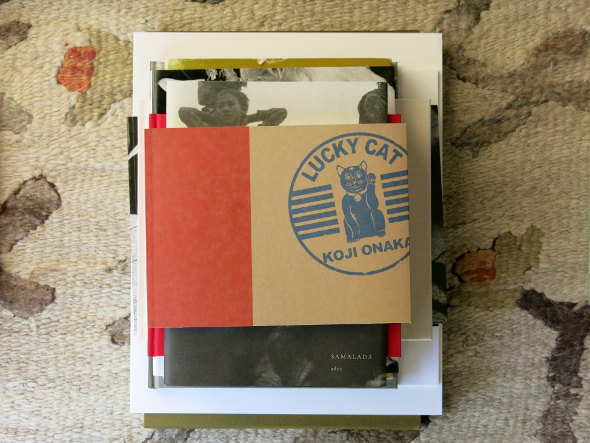

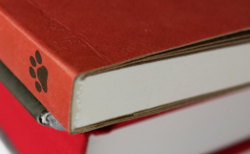
The lucky cat of the title is the maneki-neko; but fear not, there are only two of these in the book. Both are distinctly old and worn, as is just about everything else depicted in this collection of musty and rusty nooks of Japan, each somehow with its attractions.
Plenty of photos of this here at Onaka’s site, here at atsushisaito’s, and here at Josef Chladek’s. Here’s a video flip-through of the book.
Onaka Kōji (尾仲浩二). Lucky cat. Matatabi Library. No ISBN. I think “Matatabi Library” means Onaka. (Trivia lovers: matatabi means this.) Anyway, the book is available from the man himself (rather stiff postage charges) as well as booksellers.
(For this and the other books below, potentially helpful booksellers are linked to at the bottom of this post.)
Adou, Samalada

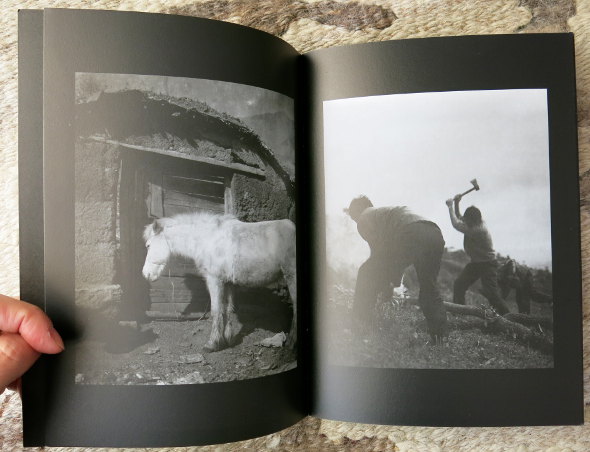
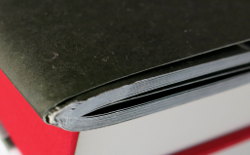
Adou was a new (Chinese) name to me when I saw a show of his work this year at Zen Foto Gallery (Roppongi). The prints were big and murky (neither of which normally attracts me); S(h)amalada (here) looked bleak, but the photographs were compelling all the same.
You can see them on Adou’s site and also here at M97 Gallery (Shanghai).
Adou (阿斗). Samalada = 沙馬拉達. Zen Foto Gallery. ISBN 978-4-905453-28-4.
The booklet (shown above) from Zen seems to be at least the third major publication of these photos: they have also constituted one volume out of the five of a boxed set, Outward expressions, inward reflections (外象, here); and earlier this year the larger half of a book, Adou & Samalada (阿斗 · 沙马拉达, here). I haven’t seen the former, but the printing in the latter is so different from that in the Zen booklet that somebody (and not only a collector fetishist) might actually want both. If (more sensibly) you want just one, perhaps get the Zen version if you’re in Japan, one of the two Chinese versions if you’re in China, and compare airmail charges etc if you’re elsewhere.
Suda Issei, Early works 1970–1975


 Here’s one for you rich people! Yes, over two hundred photos taken by Suda in his early thirties (and thus allowing for at least one volume of very early works). A lot of these appeared in photo magazines at the time. So let’s correct the above: this horribly expensive book is for the middle-income, the rich being able to afford places large enough to house complete runs of 1970s’ Asahi Camera and its rivals. Some is rather “street”, a lot is close to Fūshi kaden. Most is 35mm (or anyway isn’t square). Not every plate is of a five-star photo, but enough are, and the reproduction is excellent.
Here’s one for you rich people! Yes, over two hundred photos taken by Suda in his early thirties (and thus allowing for at least one volume of very early works). A lot of these appeared in photo magazines at the time. So let’s correct the above: this horribly expensive book is for the middle-income, the rich being able to afford places large enough to house complete runs of 1970s’ Asahi Camera and its rivals. Some is rather “street”, a lot is close to Fūshi kaden. Most is 35mm (or anyway isn’t square). Not every plate is of a five-star photo, but enough are, and the reproduction is excellent.
As if there weren’t already enough gimmickry in the wacky world of photobooks, this one comes with a choice of five cover photos.
Suda Issei (須田一政). Early works 1970–1975. Akio Nagasawa. No ISBN.
The same publisher recently decided that its Fūshi kaden wasn’t expensive enough already, and raised the price by 50%. That might happen with this book too.
Suda Issei, Fragments of calm
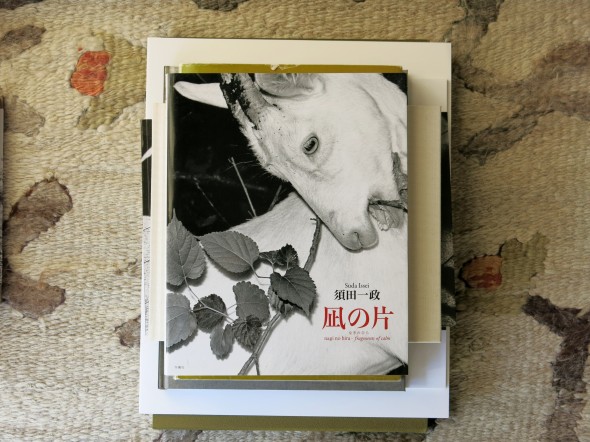

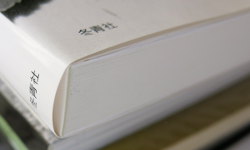 The Tokyo Metropolitan Museum of Photography is of course a wonderful institution but it has recently taken to devoting an entire floor to this or that exhibition of overly reproduced or modishly boring photos. But now and again it has an excellent exhibition of the first-rate; and this year’s big Suda show was one. (With a modest entry price too.)
The Tokyo Metropolitan Museum of Photography is of course a wonderful institution but it has recently taken to devoting an entire floor to this or that exhibition of overly reproduced or modishly boring photos. But now and again it has an excellent exhibition of the first-rate; and this year’s big Suda show was one. (With a modest entry price too.)
And here’s the catalogue. The idea seems to have been that of a tolerably good package of decently sized plates, held down to a very palatable price. So many pages are rather cramped, the printing quality is distinctly twentieth-century, and the result would never win any photobook award. Don’t complain, because you get decent reproductions of over two hundred good photos at a keen price.
(For those interested in these matters: Suda seems to have signed hundreds if not thousands of copies, which, as is normal in Japan, go for the list price. Indeed, a recent book by Suda that doesn’t have his signature might be a “collectibly” rare variant.)
Here’s a video flip-through of the book.
Suda Issei (須田一政). Fragments of calm = 凪の片. Tōseisha. ISBN 978-4-88773-145-5.
Hara Yoshiichi, Tokoyo no mushi
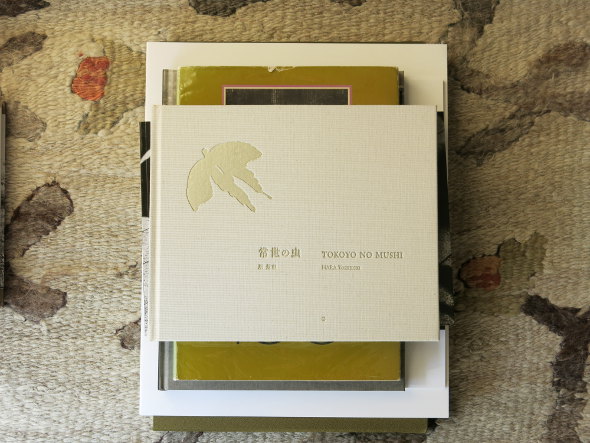
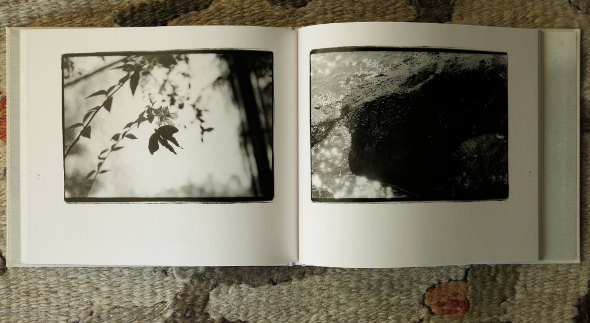
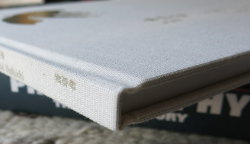 The title means something like “eternal insects” or “insects from the realm of the dead”, and a prefatory note by Hara says he’s heard stories that after death people are transformed into insects. There follow photos incorporating insects, photos of (a non-entomologist human’s idea of) an insect’s view of the human world, photos alluding to birth and to death, photos of models of the human world at a (large) insect’s scale, and more. The religious may make sense of this; I just enjoy the results in my atheistic way.
The title means something like “eternal insects” or “insects from the realm of the dead”, and a prefatory note by Hara says he’s heard stories that after death people are transformed into insects. There follow photos incorporating insects, photos of (a non-entomologist human’s idea of) an insect’s view of the human world, photos alluding to birth and to death, photos of models of the human world at a (large) insect’s scale, and more. The religious may make sense of this; I just enjoy the results in my atheistic way.
There are plenty of photos of this book here on Josef Chladek’s site and here on atsushisaito’s.
Hara Yoshiichi (原芳市). Tokoyo no mushi = 常世の虫. Sōkyūsha. No ISBN.
Nuno Moreira, State of mind

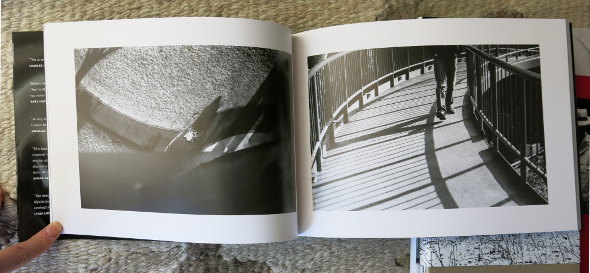
 This book is going to puzzle whichever poor librarian is the first to provide Worldcat with a record for it: no publisher is specified, let alone place of publication. Actually it’s published by its creator, who (mostly) lives in Tokyo; so despite its Portuguese ISBN it’s at least as Japanese as it is Portuguese or anything else.
This book is going to puzzle whichever poor librarian is the first to provide Worldcat with a record for it: no publisher is specified, let alone place of publication. Actually it’s published by its creator, who (mostly) lives in Tokyo; so despite its Portuguese ISBN it’s at least as Japanese as it is Portuguese or anything else.
It’s a collection of “solitary moments of disconnection” (in the photographer’s words), or perhaps of indecisive moments (not his words). We see individuals thinking, individuals not thinking, scenes likely to start one thinking — yes, it’s free-ranging. There’s even the occasional crowd, though the individual seems in a pocket of space within it. And many pleasing plays of light and shadow.
Many photos from the book here; and here’s a video flip-through of the book.
The printing could be better, but it does the job. (Certainly the book makes a refreshing change from the piles of exquisitely printed books of boring photos.)
Nuno Moreira. State of mind. Self-published. ISBN 978-989-20-4151-3. Available from the man himself.
Suda Issei, Waga Tōkyō 100

Looking a bit tired, with its dated cover design? Well yes — it’s over thirty years old.
And yes, it’s Suda again. The title can be loosely translated as “a hundred views of my Tokyo”. More square B/W, from shortly after what’s in Fūshi kaden, and similar to that and almost as good. The book shown above is printed well for its time, there are seemingly thousands of copies available, and (other than from the dealers with the slickest websites) these are cheap.
Or so I had thought. But I now realize that copies now cost about three times as much as they did just three years or so ago when I bought mine. (At hermanos Maggs, ten times as much.)
And so it makes sense for a new edition to come out. But this is a bit on the pricey side. If I lost my copy of the old one I don’t know which edition I’d replace it with. For those who don’t happen to be in Japan, a copy of the new edition (details below) would be easier to obtain than a reasonably priced copy of the old one.
The new edition is a kind of hardback/paperback hybrid. (Unkindly, it’s like a hardback whose front hinge has been neatly sliced through.) It’s shorn of a lot of the (Japanese) text of the first edition, but it has some new text in Japanese and English. And it’s well printed. The plates are (trivially) smaller than those in the original. Although the sequence of plates is different, I think that the same hundred are used in both.
Suda Issei (須田一政). Waga Tokyo 100 = わが東京100. Zen Foto Gallery. ISBN 9784905453314 (I think). The price is being held down for some time, whereupon it will jump 25% or so (to about half of the current price of Early works 1970–1975).
Watabe Yūkichi, Stakeout diary


 You know the story, or bits of it: For twenty days in 1958 a youngish photographer was allowed to photograph two cops hunting for a suspect in a grisly murder; some of the resulting photographs were published in a magazine in 1958, they were then largely forgotten; somebody bought prints half a century later and turned them into the only non-Japanese book by this “unknown” photographer; the book was much feted outside Japan (and an unusual and expensive import within).
You know the story, or bits of it: For twenty days in 1958 a youngish photographer was allowed to photograph two cops hunting for a suspect in a grisly murder; some of the resulting photographs were published in a magazine in 1958, they were then largely forgotten; somebody bought prints half a century later and turned them into the only non-Japanese book by this “unknown” photographer; the book was much feted outside Japan (and an unusual and expensive import within).
Well, here’s a Japanese edition, from prints freshly made by Murakoshi Toshiya; and from a brand new publisher, Roshin Books. It has a larger format than A criminal investigation and contains photos that aren’t in that; and the package doesn’t try so hard to be remarkable but I prefer it. “Landscape” photos are either broken across the gutter or squeezed into half a page; I’d have been happier if they’d been rotated to fill the single page. But a large percentage are “portrait”, and this is a fine book.
Plenty of photos of this are here at atsushisaito’s site, and here’s a video flip-through.
This book too has front cover variants. All variants of the regular version are sold out (at Roshin, if not necessarily at retailers), but Roshin still has copies of the version that comes with a print.
Watabe Yūkichi (渡部雄吉). Stakeout diary = 張り込み日記. Roshin Books. ISBN 978-4-9907230-0-2.
I’m looking forward to the appearance in January of Roshin’s second book. (And I wonder if there’ll be a second book from Plump Worm Factory, publisher of Murakoshi’s Prayer & bark.)
Kai Keijirō, Shrove Tuesday


 The photos here are alarming. They’re obviously of somewhere in Britain. There are many young and middle-aged heads glaring, gasping for breath, or just looking lost; they’re all male, many are shaven, they’re all “white”. Yet there are no flags of Ingerland and so it can’t be the EDL.
The photos here are alarming. They’re obviously of somewhere in Britain. There are many young and middle-aged heads glaring, gasping for breath, or just looking lost; they’re all male, many are shaven, they’re all “white”. Yet there are no flags of Ingerland and so it can’t be the EDL.
It’s sport(s), but far from what you might see on the telly. It is instead the Shrovetide football match of Ashbourne (Derbyshire): one of the most physical of Britain’s quaint provincial customs. Just good testosterone-powered fun! Somewhere in the middle of all this, there must be a ball — though since most of the players themselves are just blindly following other players (and trying to infer who’s on which side; there are no uniforms), perhaps there isn’t after all and instead it’s far away.
All very exciting, and I hope that Kai follows it up with more revelations of the exotic occident (but pauses before his camera or head collides with a boot).
Kai Keijirō (甲斐啓二郎). Shrove Tuesday. Totem Pole Photo Gallery. No ISBN. Available from TPPG if you go there in person.
Arimoto Shinya, Ariphoto selection vol. 4
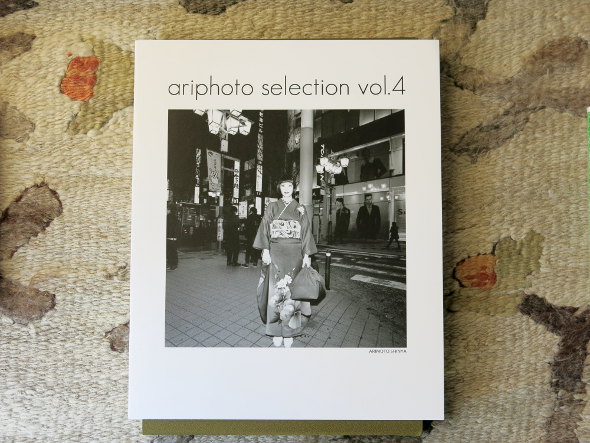
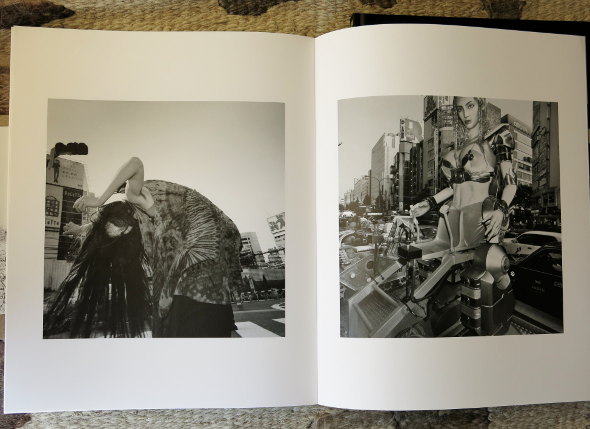
 The fourth fascicle of . . . I don’t quite know what, after the third (of Tibet) showed I was wrong to think it was Tokyo.
The fourth fascicle of . . . I don’t quite know what, after the third (of Tibet) showed I was wrong to think it was Tokyo.
They’re probably not fascicles at all, and should be enjoyed independently. And enjoyable they are. They’re “street”, street portraits, things seen in streets. In the first three photos in vol. 4, an elderly, heavily bejewelled gent fishes change from that relic of the last century, a payphone; a contortionist performs in mufti, no, she’s just a normal girl trying to shake a tiny stone out of her boot; a young transsexual happily displays her new breasts to a friend (out in the street, in daylight). True, there aren’t many more photos, but each is big and well printed.
Arimoto Shinya (有元伸也). Ariphoto selection vol. 4. Totem Pole Photo Gallery. No ISBN. Available from TPPG if you go there in person, or from the man himself over the interweb. Or from PH, which still seems to have copies of vol. 3 (out of stock elsewhere).
Kurata Seiji, Flash up

Such an opulent slipcase. It looks like a lot of the big photobooks from the sixties that gather dust in Tokyo’s used bookshops: you see a familiar name on the spine — Iwamiya or Midorikawa, perhaps — and look inside to discover that it’s all about Japanese gardens, is in muddy colours, is deadly dull, and cost 38,000 yen (of 1960s money) when new. (Did companies buy them up to hand them out as trophies?)
But a gaudy kind of opulence is appropriate here. Cabaret packaging, indeed (preferably reeking of old cigarette smoke). Because it’s for:

Yes, this is a long overdue second edition of a boss photobook. (Don’t recognize the title? Check your Parr ’n’ Badger, I:305.)
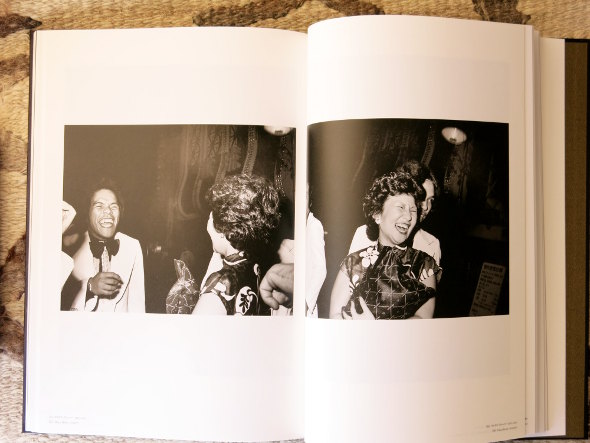





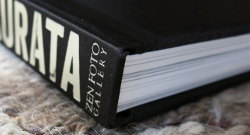 No blurring or other Provoke-ative devices here; instead, it’s a 6×7 or 6×9 and flashgun used fluently in Weegee/Moriyama territory, delivering more immediacy and happy surprises than most photographers can manage outdoors in daylight. The most Weegee-like photos are gruesome but the others are among the most enjoyable photos anywhere.
No blurring or other Provoke-ative devices here; instead, it’s a 6×7 or 6×9 and flashgun used fluently in Weegee/Moriyama territory, delivering more immediacy and happy surprises than most photographers can manage outdoors in daylight. The most Weegee-like photos are gruesome but the others are among the most enjoyable photos anywhere.
And more prints, and bigger ones, than you’ll find in the first edition. Which anyway costs about twice as much as this second one costs — which is a lot, but justifiably so. (NB the new edition is so big and heavy that postage could be considerable.)
Plenty of photos of this here at atsushisaito’s blog.
Kurata Seiji (倉田精二). Flash up. Zen Foto Gallery. No ISBN.
Plus special pats on the back for three books that I didn’t buy and therefore can’t plonk on the rug in front of my camera:
Watanave Kazuki, Hito. The title means “people” (or “person”), and the book follows pigs from happy life to merchandise: in colour, with all that this entails. It’s neither sensationalist nor sparing, and comes with thoughtful afterwords (in English as well as Japanese) by two of the men whose work is depicted. Here it is at atsushisaito’s blog. An admirable book, one I’d recommend for any library, but (sorry) not one I’d often want to look at, and so space constraints rule it out.
Watanave (Watanabe) Kazuki (渡辺一城), Hito (人). 4×5 Shi no go. ISBN 9784990559816. According to a page within the website of the publisher (a group or company of four photographers), the address to ask about it is contact [at] shinogo.com
Kōriyama Sōichirō, Fukushima. Straight but thoughtful documentary photography of the effect (social and only indirectly medical) of radiation in Fukushima. Slim, but well done, informative, excellently printed, and modestly priced. I’m not getting a copy only because I OD’d on similar (if mostly inferior) books last year, and because plenty of libraries here should have it.
郡山総一郎, Fukushima × フクシマ × 福島. 新日本出版社. ISBN 978-4-406-05673-1.
I don’t remember Kōriyama’s book as providing English captions, but there are hints here that it does (and that it has an alternative title, Fukushima black rain).
Shiga Lieko, Rasen kaigan: Album. The ghost of Nickolas Muray appears to the young Naitō Masatoshi, prods him to watch Eraserhead and gives him some bricks of infrared Ektachrome. Or something like that. This book, which you’ll have read about already, has some fascinating photos (the ash or snow covering the car interior, the glittering disposable plates, etc). I suppose it’s something like a feature film on paper . . . but a feature film fits handily into a DVD (or of course a few square nanometres of a hard drive) whereas this is a considerable slab of dead tree. And while I might flick through the (many) photos of stones, I wouldn’t want to examine them. Also, when I open the book wide to get a good view of the photos across double-page spreads, the spine makes an ominous cracking sound. But yes, the best of it is very good, so I look forward to Shiga’s Greatest hits.
There are some patterns here:
- Every one of the book(let)s above is published in Tokyo (except perhaps Lucky cat). Seigensha and (I think) Foil are based in Kyoto, but recently haven’t excited me. Vacuum Press (Osaka) has been quiet, Mole (Hakodate) is either dead or long dormant, and I haven’t noticed anything new like Kojima Ichiro photographs (nominally published in Tokyo but really a production of Aomori).
- Mostly B/W. This is odd: Most of the new non-Japanese books that interest me are colour.
- Overwhelmingly by men. Very bizarre, as plenty of the new non-Japanese books that interest me are by women.
- Mostly by old geezers (if not necessarily old when they took the photos). Really sad, this. I do see some excellent little shows by young photographers.
- Skewed toward one photographer, Suda. If any septuagenarian Japanese photographer merited a raise in exposure, it was him. I don’t begrudge him it at all. Still, it’s amusing to see the star-making system in action. (And of course I’ve added my unimportant croaks to the chorus.) This year there’ve also been two other books by Suda that I haven’t mentioned above, and in the next few weeks there’ll be Tokyokei and, I believe, one more. Good! But . . . enough for now? Attention Roland Angst: Could you now please (re)discover Nagano Shigeichi?
Again inspired by _Valerian, some (more) words on books I didn’t buy:
Araki seems to put out a new book every couple of weeks, and I only look into a copy in a bookshop if its cover is both unfamiliar and arresting. Some I didn’t notice at all. Shi-shōsetsu (死小説, perhaps also titled Death novel) would have been one of these. I normally don’t bother looking at anything by Moriyama unless somebody is particularly enthusiastic about it, but View from the laboratory (実験室からの眺め, on Niépce) looks interesting and I look forward to examining it. Kawauchi’s Ametsuchi seems to have some good material, but I wasn’t much tempted even by a pile of half-price copies (here) of the Japanese edition, in part because this shares the perverse design of the Aperture version.
And then there are — I infer from word of Einmal ist keinmal — more books whose existence I haven’t even noticed.
Plus my taste is probably defective.
If you’re in Japan, you’ll probably already know where to look for books; if you aren’t, duckduckgo for them. If you want new books to be sent out of Japan, aside from tips above there’s Shashasha, Flotsam and Book of Days (none of which I’ve bought from), and Japan Exposures (which I have); if you want used books there’s Mandarake.
You’ll find more “best of 2013” lists here.
PS (28 Dec): A disproportionate number of the most rewarding among these are by some bloke in Eugene. And among them — well, see for yourself.
Intetesting list thanks. It would have interesting to hear about your comparison with Le Bal/Xavier Barral earlier edition of Stakeout.
It would indeed be good if somebody a lot less lazy than I am compared the photos, one by one. I have already noticed that sometimes the one book has a photo that’s almost the same, but not the same, as a photo in the other book — perhaps the adjacent frame in the same roll of film. I find this curiously enjoyable.
“A criminal investigation” sold out but was later reprinted. I’m surprised (though happy for Roshin) that “Stakeout diary” sold so quickly. I wonder if it too will get a second printing.
[…] New York Times, Dazed Digital, Lens Culture, Washington Post, Brain Pickings, Tom Claxton, Microcord, Eric Gundersen, Conscientious, Tim Clark, Monsters & Madonnas, Valerian and Discipline […]